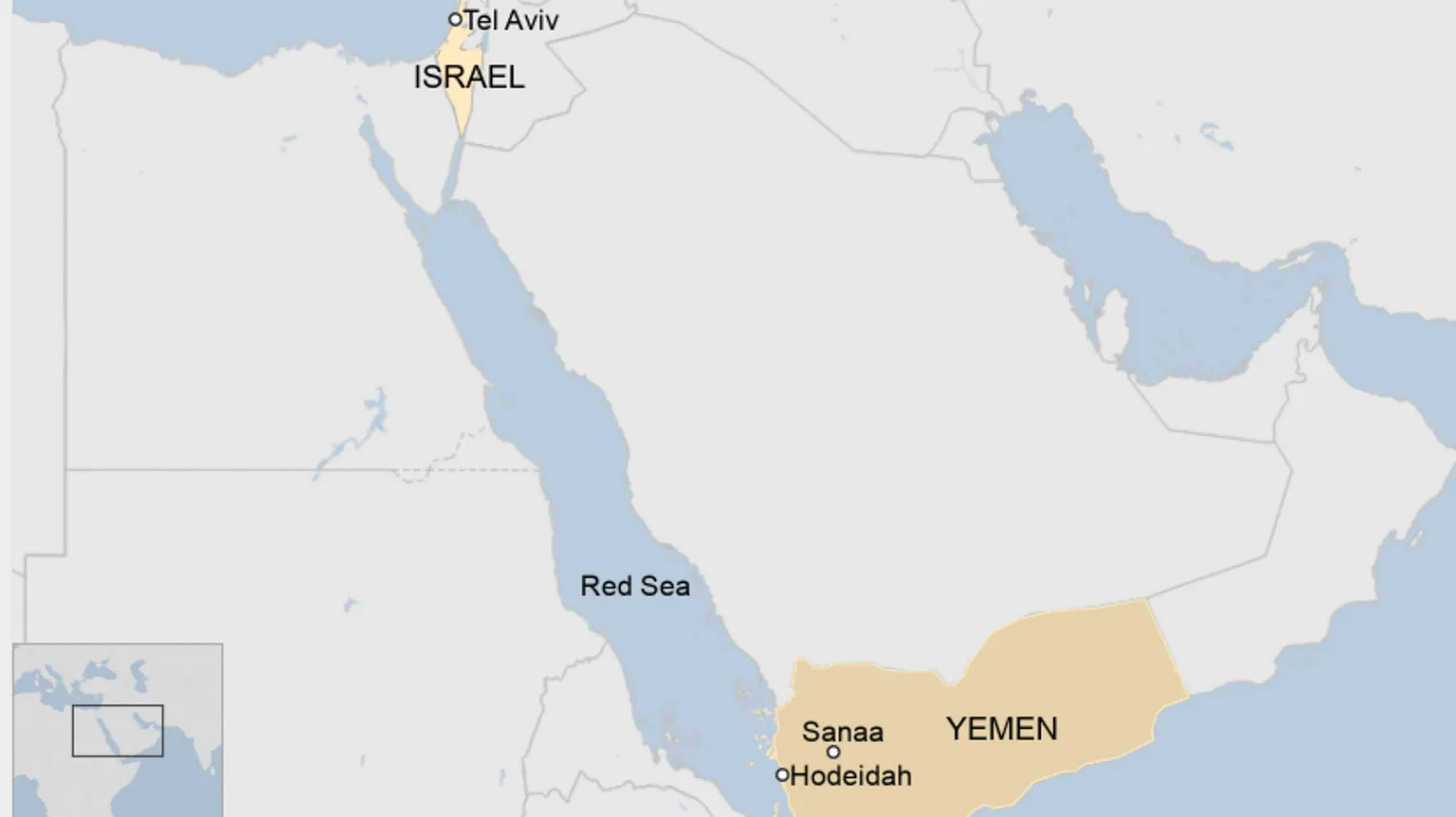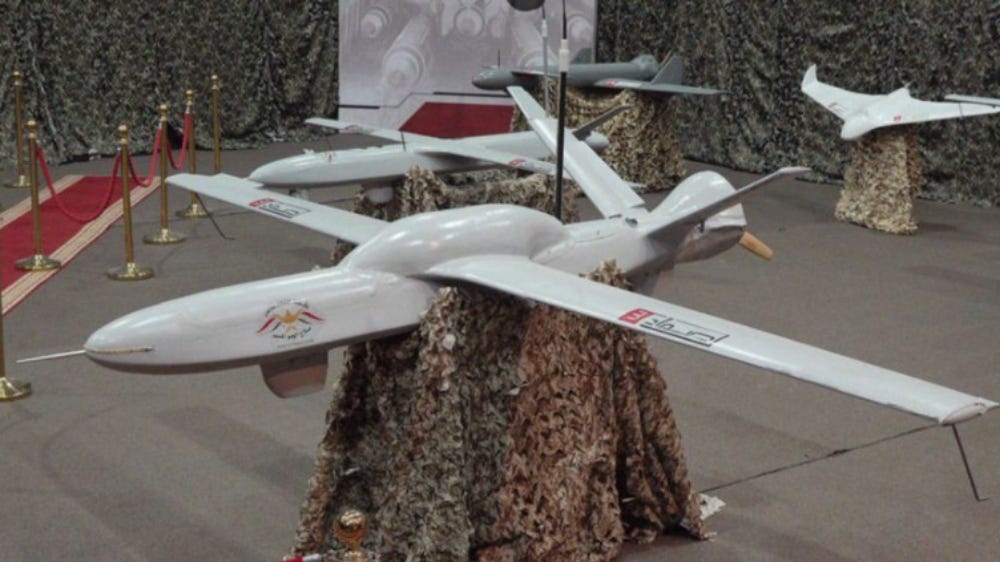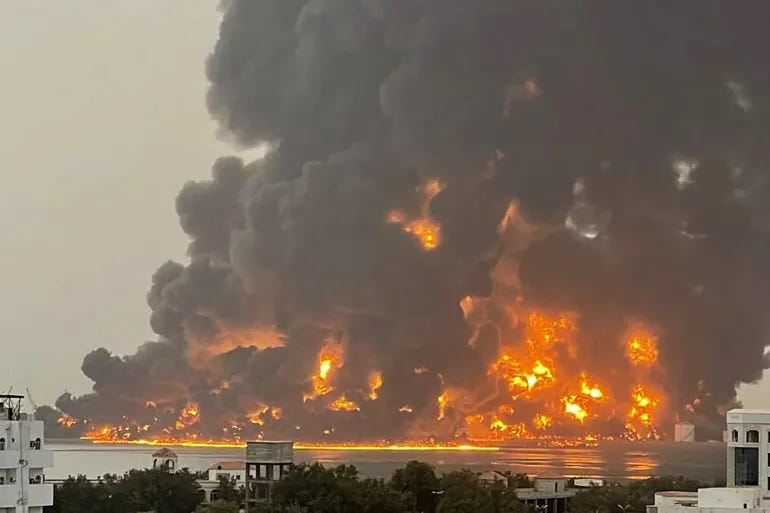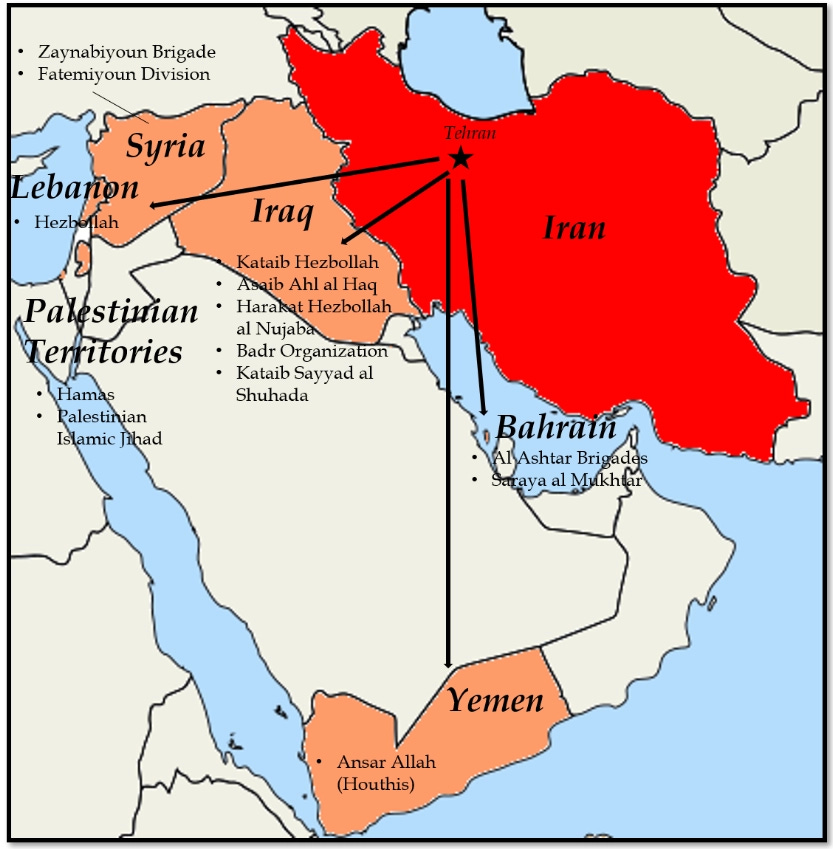Analyzing the Houthi-Israel Attacks
Sometimes it's better to give things a few days to unfold, rather than try to be first
Smoke rises from the Houthi-controlled port of Hodeidah following a July 20 Israel strike. Image source
I always tell other analysts not to write about or even try to analyze events immediately after they occur. I say this for two reasons: one, we cannot keep up with major news agencies like AP and Reuters, and two, there’s always so much more to be understood in the details that come out later.
The latest strike on Tel Aviv is no exception. When I woke on the morning of July 19, I had messages from people telling me it was by Hezbollah and asking what kind of weapon they used. Within an hour, the media revealed that the Houthis attacked Tel Aviv using a modified Samad-3 attack drone launched from Yemen. The strike killed one man and injured four others and came hours after Israel announced it had killed a senior Hezbollah commander in neighboring Lebanon. The next day, Israel struck the Houthi port of Hodeidah using F-15 fighter jets, destroying fuel depots and other port infrastructure, reportedly killing six people and injuring 83 others.
Now that we have the facts, we can do some analysis.
Yemen is just over 2,000 kilometers from Tel Aviv and the attack route was reportedly over 2,600 kilometers in length. Image source
A cheap drone infiltrates one of the world’s most defended airspaces
The Samad family of unmanned aerial drones (UAVs) – named after the Houthis’ former second in command, Saleh al-Sammad, who died in a 2018 coalition airstrike – are among the most advanced weapons in the Houthi arsenal. Israel claims that Iran manufactures these drones, but the Houthis claim they manufacture the units in Yemen and that Iran was not involved in the July 19 strike on Tel Aviv. According to weapons experts, the drone used in the July 19 strike was most likely a modified version of the Samad 3, which they claim was built in Yemen but designed in Iran.
The Houthis previously used the Samad 3 to conduct 2018 attacks on airports in Dubai and Abu Dhabi in the United Arab Emirates (UAE). The previous UAE strikes already pushed the limits of the drone’s reported 1,500-kilometer range, meaning that the July 19 strike on Tel Aviv – where the UAV traveled some 2,600 kilometers over 16 hours – required substantial modifications to the original device. By attack drone standards, the device is remarkably cheap, using components such as a $1,500 propeller and a $2,500 Nikon camera – components rebel operatives can order online from suppliers in Europe and China. That the Houthis can source parts under heavy sanctions to build one of these units and expand on its capabilities speaks to their ingenuity, or possibly that of their Iranian backers.
The Samad 3 has a 4.5-meter wingspan and a typical operational range of 1,500 kilometers. The one used to strike Israel was modified to fly at least 2,600 kilometers. Image source
The Houthis’ modified UAV not only successfully reached Israel but also evaded Israel’s Iron Dome and Arrow air defense systems. According to experts, the Samad 3 is not particularly fast, stealthy, or sophisticated. The Israeli Defense Forces (IDF) blamed human error for missing the drone as a blip on their radar and says it will double the number of radar operators in its employ moving forward.
In my April 30 article, I outlined the enormous cost of running traditional air defense systems due to the proliferation of cheap weapons deployed by Iran and its proxies. Israel’s air defenses are among the world’s most advanced; however, the systems in place today were designed between the 1990s and 2010s, with the latest Iron Dome system unveiled in 2011. The world has changed dramatically since then, especially with the proliferation of low-cost weapons from Iran among its proxies across the Middle East, something I outlined in a February 6 article. Today, Iran-backed proxies pose a more significant threat to Israeli airspace than other states in the region ever could. For example, Hezbollah can reportedly launch 3,000 munitions per day, which experts believe can overwhelm much of Israel’s air defense capabilities. The latest attack by the Houthis demonstrates the hypervigilance required to repel even minor, low-tech strikes.
The proliferation of low-cost consumer electronics powered by older model ‘legacy’ chips poses a severe threat to states and militaries globally, especially as China aims to export more of these low-cost chips in the coming years. Israel already plans to address this using a high-energy laser defense system called the ‘Iron beam,’ which Israeli sources claim costs just $3.50 per shot. Similarly, the British Army recently tested a laser defense system built by Raytheon, and a British firm made headlines earlier this year with its DragonFire laser system, which it is reportedly pushing for battlefield use in Ukraine. However, laser weapons have severe limitations, including limited capabilities under heavy cloud cover. AI-swarming drones are also under development but remain in the experimental phase. In the meantime, low-cost weapons will continue to pose a severe threat to advanced militaries worldwide, including that of Israel.
Hitting the Houthis where it hurts, but not enough to make them stand down
Given the Houthis’ reliance on imported fuel and food and their history of famine, the Israeli strike on their only major port with modern facilities could have severe consequences for them moving forward. However, the Houthis have remained firm in their resolve throughout this conflict, having now survived the nearly decadelong Saudi-led war against them. The Houthis remain highly resourceful and steadfast in their mission and, thus, unlikely to back down. For this reason, we can likely expect further attacks on the Red Sea, especially amid reports that the group is now collaborating with the Somalia-based al-Shabaab terrorist group, potentially furthering its reach across much of the Indian Ocean.
The Israeli counter strike on Yemen reportedly caused extensive damage at the port of Hodeidah. Image source
Houthis, not Hezbollah, not Iran
Not all Iranian proxies are the same. Whereas Hezbollah is closely linked to Iran politically and militarily, the Houthis are on the other end of the spectrum, with vastly reduced capabilities and much less operational coordination with Tehran, something I explored in depth in my January 22 article. Although the latest Houthi attack comes amid rising tensions between Israel and Hezbollah and comes on the heels of Israel’s killing of a top Hezbollah commander in Lebanon, we cannot say for sure that there was any coordination between these groups or Iran.
This ambiguity may be a blessing or a curse for Iran, depending on how one sees it.
From a positive perspective, the strike means that Israel has another front to deal with in its ongoing and increasingly regional war. Moreover, the vague relationship between Iran, Hezbollah, and the Houthis gives Tehran plausible deniability in the event of escalation. This style of engagement may mirror the ‘grey zone’ tactics increasingly employed on the world stage by other countries such as Russia and China.
Conversely, a Houthi strike on Israel without Iran’s consent could result in unwanted escalation. From the war’s outset, Hezbollah has been careful to limit its escalation with Israel to avoid an outright conflict, resulting in tit-for-tat attacks. To date, Israeli strikes have killed several top Hezbollah commanders, whereas Hezbollah’s attacks on Israel have been comparatively minor in terms of damage. Although Hezbollah could inflict massive damage on Israeli critical infrastructure in the event of an all-out war, the threat of a total Israeli assault on Hezbollah could also pose an existential threat to the group. Similarly, I argued in an April 15 article that Iran’s April 13 counterstrike on Israel was limited in scope and more of an intended message than a desire for escalation, given the risks an all-out war with Israel poses for Tehran. If Iran cannot control the Houthis, then the Houthis potentially represent an even more significant threat to Iran than they do to Israel.
I believe Iran’s regime is in a state of flux at the moment and that it could go in multiple foreign policy directions in the coming months. We will explore this in my next analysis piece.
Iran’s proxies extend Tehran’s reach across the Middle East. Image source







